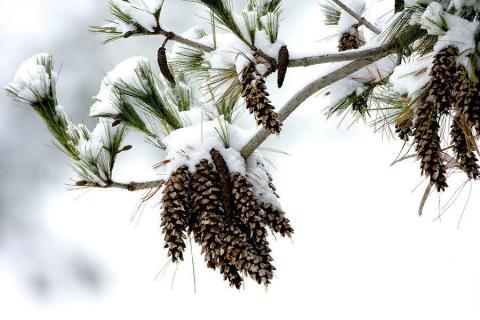
By Joseph Stinziano
Evergreen conifers face a unique challenge during winter: it is too cold for photosynthesis, but their leaves still absorb light energy. This can be dangerous to leaf tissues if the absorbed light energy is not dissipated. Plants can get rid of excess light energy absorbed by light harvesting complexes through the xanthophyll cycle, whereby a pigment called violaxanthin (which absorbs light energy for use in photosynthesis) is converted to zeaxanthin (which converts light energy to heat) under stressful light conditions. Conifers have both a rapidly and slowly reversible form of energy dissipation (via the xanthophyll cycle) for winter stress, and the rapid form disengages above 0°C, while the slow form is maintained throughout winter.
In a recent article in Tree Physiology, Ryan Merry and colleagues (2017) sought to determine how two evergreen conifers, Eastern white pine (Pinus strobus) and white spruce (Picea glauca), recover from winter stress. To look at recovery, they cut branches from trees throughout the winter, took them indoors, and looked at how the leaf biochemistry changed under warmer temperatures. They found that pine took up to three times longer than spruce to recover photosynthetic function. The rapid form of energy dissipation was only obvious in one case for pine, but in all cases for spruce demonstrating that pine may be more dependent on the slow mechanism of photosynthetic recovery than spruce. These differences between pine and spruce were also associated with changes in the phosphorylation status of key photosynthetic proteins. Dephosphorylation, the removal of a phosphate group from a protein, is a process used to regulate protein function over short to long time scales. Since the dephosphorylation of light harvesting complexes was faster in spruce than pine, the authors hypothesize that this process may regulate the rapidly reversible component of energy dissipation in evergreen conifers.

